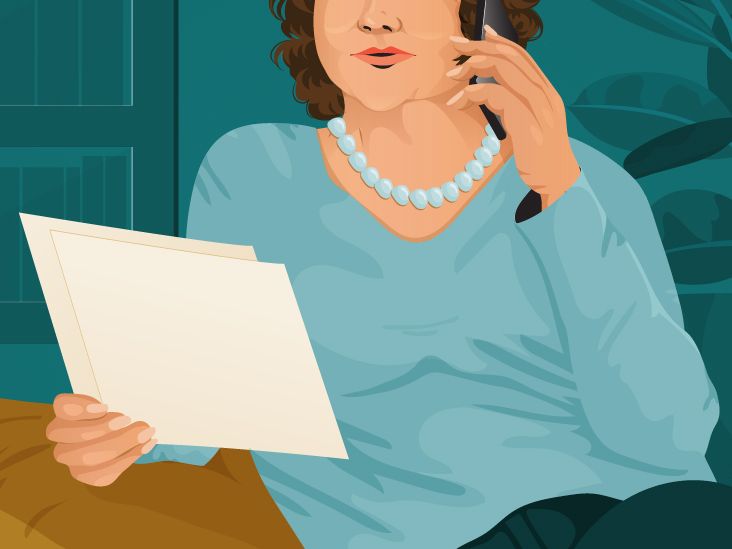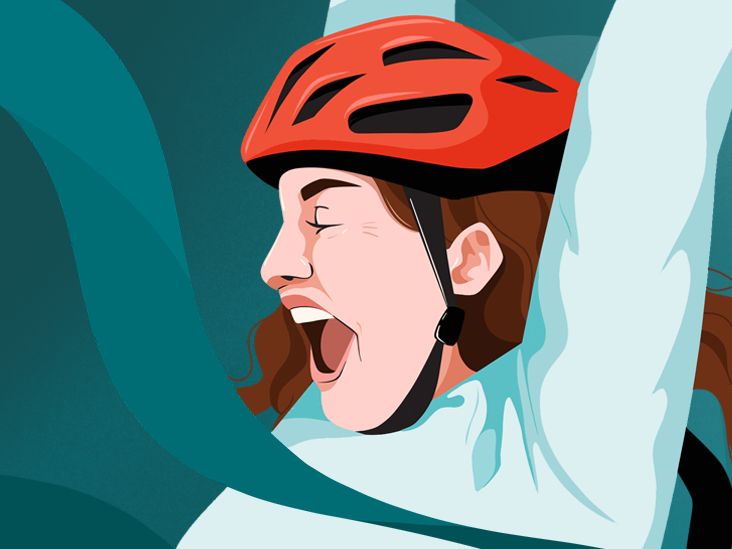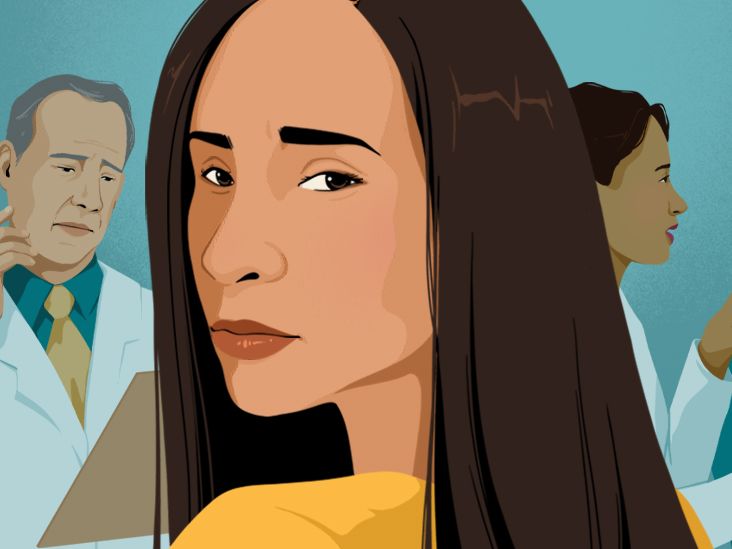
I can’t remember the first time I experienced head pain so severe that I was debilitated by it.
What I do remember though is time after time of me laying in my bed, surrounded by Cabbage Patch dolls and stuffed pigs, a cold washcloth across my eyes, while my mom sat on the floor next to me, stroking my hair and whispering to me.
I was young enough to still be excited by the prospect of staying home from school for a day, but I was soon disappointed when I realized I couldn’t watch daytime game shows the way I could when I was home with a tummy ache or sore throat … the pain was simply too severe.
I began having severe head pain sometime in fourth grade, and by the time fifth grade rolled around, the headaches were coming more and more regularly, to the point that I missed a good portion of my fifth-grade year. Classmates sent me a huge sheet of butcher paper that they’d drawn and written notes on. The novelty of being home from school had long ago worn off, and I wanted nothing more than to be with my friends in class.
As a young child, it felt like my life — as I knew it at least — was over.
Instead of sitting in class, taking tests with my classmates. I was sitting in doctors’ offices, taking tests I barely understood. I was so young; my memories of these are like grainy snapshots.
There was the allergy doctor who poked me until I passed out, testing for allergens like pet dander. They even ordered something special to see if I was allergic to my guinea pig. We discovered that I wasn’t allergic to my pets, just mildly allergic to dust.
My mom put all my porcelain dolls in the garage after that and did load after load of laundry. Unfortunately, the headaches persisted.
There were MRIs. The technician let me pick my own music — the oldies station — and my parents bought me the game Mouse Trap after. There was a CAT scan (and a Rainbow Brite doll). And oh so many blood draws (and lollipops).
At some point, there was a doctor (whose specialty I can’t remember) who touched my jaw during an exam, and I promptly kicked him in the groin. He diagnosed me with TMJ on the spot and sent me to a specialist.
“I’d been in such excruciating pain for so long that it seemed that pain was now my life.”
The specialist wasn’t used to seeing children and wasn’t prepared for his young patient to burst into tears upon seeing the needles in his office. He sent me to the waiting room while he told my parents that my pain was all in my head and referred me to a child psychiatrist.
Luckily, the psychiatrist told my parents it wasn’t all in my head … or rather, it was, but it was a very real pain, with a medical issue behind it, not a psychological one.
Somehow, through another series of doctors I can no longer recall, I ended up in a neurologist’s office. Finally, I was diagnosed with migraine.
That’s when the journey to find a treatment that worked began.
There were medications that didn’t work at all, and there were medications with terrible side effects. One made me stop breathing, and I had to be rushed to the ER. Finally, though, we found a medication — Imitrex — that I could take at the first signs of a migraine episode. It helped me sleep until the pain was mostly gone.
Worst case, if it didn’t work after a few doses, I’d go to the emergency room and get an injection of pain medication or a “migraine cocktail” in an intravenous (IV). After that, I’d be better within a day or 2.
This treatment, combined with massage therapy and physical therapy, helped keep my migraine episodes under control all through college.
Sometime after college my migraine symptoms just disappeared. I kept my prescription of Imitrex active just in case, but it was rare that I had to use it. Eventually, after a number of years, I let the prescription lapse, believing that maybe I was free from migraine completely.
Then, in my early 30s, I was struck with the worst migraine I’d ever had. While I’d never had nausea with my migraine episodes before (although it’s a fairly common symptom), this time I vomited. I also developed dark circles under my eyes that made it look like I’d been in a fight. I completely lost my vision, to the point that I couldn’t even see the giant “E” at the top of the vision chart in the ER.
My doctor gave me Imitrex, but it didn’t work. We tried several other medications, some with severe side effects, and nothing helped.
I saw a naturopath who gave me magnesium and vitamin B, and my massage therapist got me in for extra massages, but I was still in pain. Finally, after multiple doctor and ER trips over the course of a single week, the pain subsided to a manageable level, but it never actually went away.
That major migraine episode sent me on yet another journey to find treatment. I saw a highly recommended neurologist who put me through more tests, a myriad of medications, and a variety of alternative treatment options ranging from Botox to acupuncture to herbal supplements.
Unfortunately though, while we were able to get the migraine spikes reasonably under control, the underlying headache persisted, and I was always in some level of pain.
A few years later, with a new neurologist, I had another bad spike and ended up being admitted to the hospital. Here they tried a multi-day infusion of DHE, an older migraine medication … that is until my heart rate dropped into the 40s and I began feeling very, very strange. I was immediately taken off the medication.
The hospital neurologist administered some occipital nerve blocks and then shrugged, saying, “Some migraine patients never get any better than a three or four on the pain scale. You may just have to learn to live with it.”
I went home crying and feeling defeated.
I was desperate. The pain in my head made me feel like I couldn’t focus on anything. I tried every possible thing I could find on the internet or recommended in online forums. I took handfuls of supplements. I saw homeopaths, naturopaths, and herbalists. And I asked them for more referrals to more specialists.
One day a friend asked me, “Angie, what would you do with your time if you weren’t constantly trying to fix yourself?”
I didn’t have an answer. I’d been in such excruciating pain for so long that it seemed that pain was now my life.
Eventually, at a new doctor’s office, I broke down crying and couldn’t stop. I was so exhausted from the process, so tired of hurting, and so tired of trying not to hurt.
The doctor asked me if my pain ever made me depressed. While I felt the answer was pretty obvious given my current state, I said yes. He suggested an intensive outpatient pain management program. The program, he said, wouldn’t help with the actual pain, but it would help me learn how to live with it.
When I got home, I cried harder, as this felt too close to that TMJ doctor years ago who sent me to the psychiatrist instead of treating me. But I decided to give it a chance.
I found myself in a 2-week program that incorporated group and individual therapy, work with an occupational therapist, yoga for pain relief, acupuncture, art therapy, and biofeedback.
The program was for those living with chronic pain, and there were folks in the group ranging from young men in their 20s who’d endured horrific car accidents to folks in their 70s living with disk degeneration and arthritis.
Within days of being in the program, I realized this was going to be just as helpful, if not more so, than any of the other treatments I’d tried.
While I was continuing to work with my neurologist to find a medication that helped (and I’m happy to report that I’ve found both a daily preventive and an abortive medication that works quite well), I’d never had anyone simply acknowledge the difficulty of living with pain, much less give me strategies for how to live with it.
“Most important of all though, I was validated in my pain, in my exhaustion, and in my grief. I was given a space to process what it means to live with chronic illness…”
In the program, I learned through biofeedback how to breathe through the pain to pull my body out of fight-or-flight mode. I also learned tips and tricks like using a longer-handed hairbrush when using my arms hurt or doing certain chores seated in order to reduce some of the strain on my body, which was already strained from being in pain.
Most important of all though, I was validated in my pain, in my exhaustion, and in my grief. I was given a space to process what it means to live with chronic illness (in my case, multiple chronic illnesses) and to begin the grieving process. This, more than anything, was exactly what I needed.
Through this process, and my own work outside of the program, I was able to begin to radically accept my conditions. Instead of pushing against my body, I was finally trying to work with it.
The truth is, I still struggle with migraine, and it’s rare to have a day without at least some level of pain. But now, I’m better equipped to handle it. I know strategies that not only help with my pain levels (like ice packs and cranial sacral massage), but also strategies for coping (like resting more, doing breathing exercises, and reaching out to my friends and disability community).
So, while I’m still dealing with the pain of migraine 3 decades after I first experienced them, I’m in a position now where I feel like I can live with them. My life is not over; it is flourishing, and I am flourishing along with it, pain and all.



